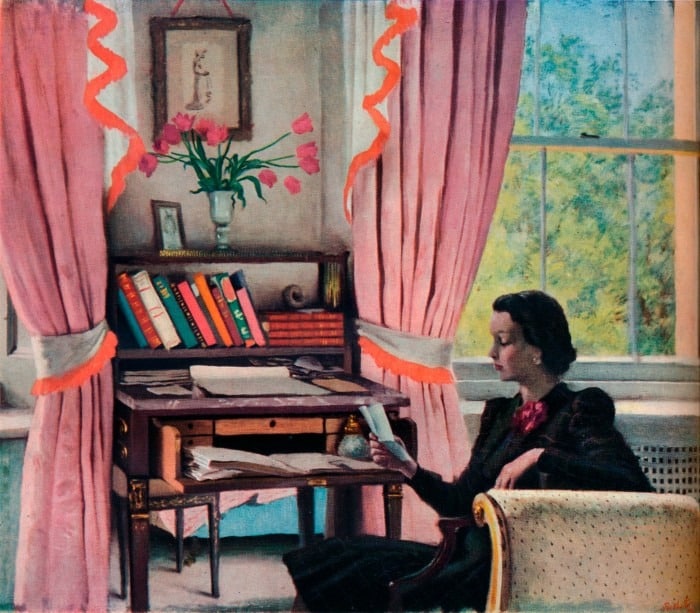In her thoroughly researched and fascinating new book, historian Emily Cockayne delves deep into the long, murky history of poison pen letters – unsigned missives motivated by envy, jealousy and malice. She explores the psychology behind those driven to send such anonymous notes, along with the devastating impact they could have.
Cockayne grippingly opens her study with a disturbing example of poison pen cruelty from her own family’s past. In 1894, a woman named Mary Dorothea Cockayne received an anonymous letter falsely claiming that her gravely ill adult son had died, when in fact he was still clinging to life at the time. Cockayne poses the haunting question – what possible motive could someone have for perpetrating such a needlessly vicious lie on a grieving mother?
Tracing poison pens back to their origins, Cockayne finds some of the earliest documented cases date from the 1760s. During a period of bread shortages, one desperate Welshman penned an unnamed letter demanding local farmers lower their prices, threatening to destroy them “by soord [sic] and gun” if they refused to comply. She highlights how desperation likewise fueled the sending of anonymous threats in the 1790s to the owners of newly mechanized textile mills in Britain, whose efficient looms were putting traditional hand weavers out of work.
Clergymen were also uncomfortably frequent targets of poison pens through history, including one particular village vicar who received angry warnings castigating him for shortening the lives of his own parishioners by forcing them to stand without hats in freezing churchyards during burials on winter days. However, Cockayne points out that ironically, men of the cloth were sometimes the very culprits behind such unsigned letters themselves. She details a case in 1811 where a Reverend Richard Bingham was found to have penned incendiary anonymous letters himself in order to frame local “foresters” for the letters, after he intentionally burned down a rectory he had recently insured for a tidy profit.
Indeed, Cockayne notes that prominent judges trying poison pen cases often wrongly leaped to the assumption that spiteful women of lower social class than the victim were the likely authors, especially when envy appeared a potential motive. To illustrate this miscarriage of justice, she spotlights two notorious examples where the supposedly upstanding ‘victim’ later turned out to be the actual mastermind behind the letters.
The first began in 1912 as a years-long saga that saw three separate juries hoodwinked into believing gentle, soft-spoken Mary Johnson had written a barrage of vulgar poison pen letters to her mild-mannered neighbor Eliza Woodman. Johnson ultimately served 18 months in prison for the letters before it was shockingly revealed that the real author was none other than Woodman herself, who had methodically penned the vile letters, arranged for their delivery to her own doorstep, and masterfully framed Johnson for the act out of bitter jealousy that the childless Woodman was a doting foster mother to several children while Johnson had biological children of her own.
A similar miscarriage of justice ensued in the case of upstanding Edith Swan, who was able to cunningly forge a stream of shockingly obscene anonymous letters pretending to be written by her innocent neighbor about Swan herself. Police failed to consider that Swan’s evident self-hatred and capacity for violently vulgar language signaled she was the actual author of letters that described Swan as a “foxy-ass, piss-country whore” in the posed words of her unwitting neighbor.
Indeed, Cockayne’s extensive research reveals that frequently, a sense of powerlessness or insignificance is a prime motivator behind poison pen writing campaigns. She details cases like that of Winifred Simner, who unleashed a barrage of aggressive letters on local council members in Wimbledon, seemingly stemming from frustration over the relative success of a military cousin. Meanwhile, working class factory employee Enoch Knowles targeted famous elites like judges, royals, and high-ranking clergy with his poison missives, seemingly grasping for significance by harassing “folks that I have seen in the newspapers” as he described it.
Admitting that trapping poison pen writers could often prove exceedingly tricky given unreliable handwriting analysis, Cockayne explains officials frequently had to resort to luring the culprit into using postal stamps secretly marked with invisible ink in order to finally identify the sender. And in some instances, as with the heartbreaking double suicide of a devoted couple targeted by a 1938 torrent of malicious letters, the cruel perpetrator frustratingly managed to evade identification entirely.
While an added chapter exploring the prevalence of poison pen letters as a plot device in fiction from Enid Blyton to Philip Roth would have enriched Cockayne’s social history, she nonetheless provides a thoroughly-researched and wide-ranging survey of this unsettling yet fascinating literary niche. And she poses thought-provoking questions about the deeply human impulse that persistently drives some to pen destructive letters of envy and malice, whether centuries ago or in today’s digital age of anonymous online trolling.



